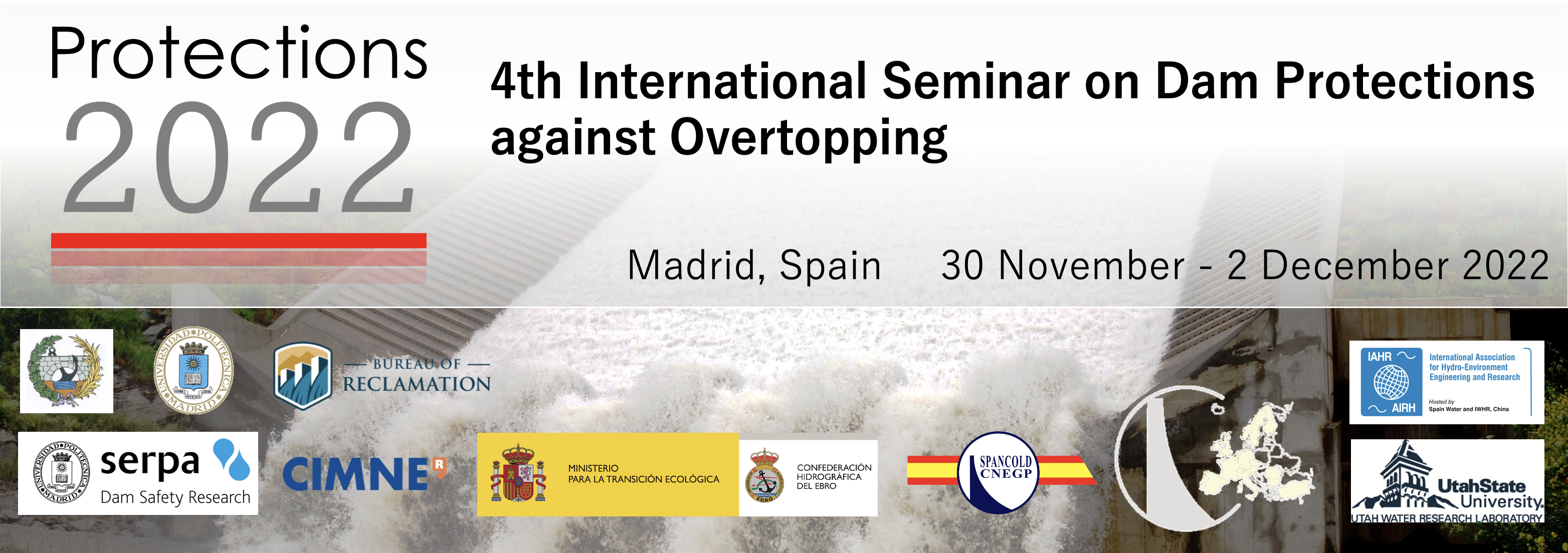Location
Madrid, Spain
Session
Session 4
Start Date
12-1-2022 10:40 AM
Description
It is important to quantify the soil resistance against erosion caused by the overflow of dikes and levees. Small-scale tests are not recommended, as they do not provide a correct representation of the actual soil in place and do not take into account the geometry of the structure. For this reason, the National Research Institute for Agriculture, Food and Environment (INRAE) developed an on-site overflow device in 2015. The procedure followed is based on ASTM-D6460 standard. Two tests were performed in May 2022 on a Compagnie Nationale du Rhône (CNR) dike near Avignon (France). The dike is 6.2 m high; the core is mainly made of sandy silts. The toe is covered by a gravel shoulder which forms a berm. The first test was carried out on the intact soil: the core covered by a natural grass on the upper part, and the gravel fill without grass in the lower part of the slope. The test consisted of carrying out a flow in a channel of 1 m wide and 25 m long, in 12 steps of 30 min (6 hours of flow in total). The second test was carried out on the soil stripped of the vegetation cover in order to study the soil of the upper part of the embankment, made up of compacted sandy silt and sandy gravel. The test consisted of carrying out a flow in a 60 cm wide and 20 m long channel, in 9 steps of 30 min (4.5 hours of flow in total). The test campaigns were carried out with flows ranging from 12 to 140 l/s per linear meter, corresponding to a crest water depth ranging from 4 to 18 cm. On test 1, no significant erosion of the natural grass cover was observed. A small erosion pit 20 cm deep was observed on the compacted gravel berm surface. A scour hole of approximately 1.10 m in depth for a volume of 4.2 m3 was observed in the downstream gravel fill that cover the lower part of the embankment. On test 2, the compacted sandy silt layer was eroded a few centimeters by the surface flow. The sandy gravel layer was eroded from the first flow (5.7 cm of water height at the crest), which led to the beginning of a breach (deepening) over 10 m long, of 1.30 m maximum depth, 1.80 m maximum width and 9 m3 of eroded soil. The first result of these in situ overflow tests is that not all of these observations were predictable from the erosion tests previously performed in the laboratory and in situ (Jet and Het erosion tests). The second result is the remarkable resistance of the natural grass cover.
Creative Commons License

This work is licensed under a Creative Commons Attribution-Noncommercial-No Derivative Works 4.0 License.
Included in
Field Testing of the Overflow Erosion of Rhone River Levees
Madrid, Spain
It is important to quantify the soil resistance against erosion caused by the overflow of dikes and levees. Small-scale tests are not recommended, as they do not provide a correct representation of the actual soil in place and do not take into account the geometry of the structure. For this reason, the National Research Institute for Agriculture, Food and Environment (INRAE) developed an on-site overflow device in 2015. The procedure followed is based on ASTM-D6460 standard. Two tests were performed in May 2022 on a Compagnie Nationale du Rhône (CNR) dike near Avignon (France). The dike is 6.2 m high; the core is mainly made of sandy silts. The toe is covered by a gravel shoulder which forms a berm. The first test was carried out on the intact soil: the core covered by a natural grass on the upper part, and the gravel fill without grass in the lower part of the slope. The test consisted of carrying out a flow in a channel of 1 m wide and 25 m long, in 12 steps of 30 min (6 hours of flow in total). The second test was carried out on the soil stripped of the vegetation cover in order to study the soil of the upper part of the embankment, made up of compacted sandy silt and sandy gravel. The test consisted of carrying out a flow in a 60 cm wide and 20 m long channel, in 9 steps of 30 min (4.5 hours of flow in total). The test campaigns were carried out with flows ranging from 12 to 140 l/s per linear meter, corresponding to a crest water depth ranging from 4 to 18 cm. On test 1, no significant erosion of the natural grass cover was observed. A small erosion pit 20 cm deep was observed on the compacted gravel berm surface. A scour hole of approximately 1.10 m in depth for a volume of 4.2 m3 was observed in the downstream gravel fill that cover the lower part of the embankment. On test 2, the compacted sandy silt layer was eroded a few centimeters by the surface flow. The sandy gravel layer was eroded from the first flow (5.7 cm of water height at the crest), which led to the beginning of a breach (deepening) over 10 m long, of 1.30 m maximum depth, 1.80 m maximum width and 9 m3 of eroded soil. The first result of these in situ overflow tests is that not all of these observations were predictable from the erosion tests previously performed in the laboratory and in situ (Jet and Het erosion tests). The second result is the remarkable resistance of the natural grass cover.


